Honey bees, also known as “honeybees,” are a group of insect species in the genus Apis. These insects are eusocial, which means they form large, complex societies. They are best known for building hives to store honey, and it is common to farm them for this reason. While they are not the only bees that can produce honey, the only true “honeybees” are in the genus Apis. Read on to learn about the honey bee.
Description of the Honey Bee
There are 7 different species of honey bees, and 44 different subspecies. Each species and subspecies has its own minute differences in appearance. However, all have the same basic anatomy.
Their bodies consist of a head, thorax (or midsection), and abdomen (or rear section). The first section, the head, contains a pair of antennae, and mouthparts. Next, the thorax is where the wings and six legs, attach to the body. Finally, the famous stinger is at the end of the abdomen.
Interesting Facts About the Honey Bee
Though people often fear these insects, particularly because some people are allergic to them, they are actually extremely important creatures. Honeybees are the chief pollinators of a number of plants. Learn more fun facts about honeybees below!
- Single-Use – Unlike wasps, honeybees can only sting once. When they insert the stinger, it pulls off part of the bee’s abdomen and digestive tract. This means that if a bee stings you, it will die. However, they can sting other insects without dying, as their barbed stingers don’t stick in thinner skin.
- The Fruits of their Efforts – Even though bees sting, that doesn’t mean they are bad insects. Actually, they are incredibly important in the production of fruits and vegetables, as well as the reproduction of plants. These insects are essential in the pollination of kiwi, watermelon, cantaloupe, squash, pumpkin, macadamia, cashew, and cucumber, just to name a few!
- Perks of Pollination – Plants and their pollinators have a mutualistic relationship. This means that both creatures benefit from the interaction. When bees drink the nectar of flowers, they also collect dust-like pollen on their legs. They then deposit the pollen onto other flowers they visit for nectar. Spreading pollen is essential in the reproductive system of plants. Basically, without bees, we wouldn’t have many types of fruits!
- Colony Collapse Disorder – Over the past decade, entire hives of bees have been mysteriously dying off. Researchers call this phenomenon “colony collapse disorder.” In fact, in some areas nearly 90% of the bee population has disappeared. Scientists are working to help prevent disease and infections within the hives, and research the impact of pesticides on bees, to prevent colony collapse.
Habitat of the Honey Bee
These insects require habitats with plenty of feeding opportunities nearby, namely, flowering plants. They can live in natural habitats, agricultural areas, and urban parks or gardens. Their preferred habitats include orchards, meadows, gardens, woodlands, and virtually anywhere with plenty of flowers growing.
Honey bees are also capable of surviving in cold climates, and thermoregulate by huddling within the nest. The bees actually shiver to increase the temperature inside the hive.
Distribution of the Honey Bee
Different species of honey bees live in different regions of the world. Each species has its own unique range. While some species are common, others have grown quite rare. The dwarf and black dwarf species are both native to Southeast Asia. The giant species lives in both South and Southeast Asia.
The eastern species lives throughout southern and southeastern Asia. Koschevnikov’s bee lives in Malaysia and Borneo. The European species is the most common, and resides on every continent except for Antarctica. Finally, the Philippine honey bee lives in the Philippines and Indonesia.
Diet of the Honey Bee
The only nutrition that honeybees receive is nectar and pollen from flowers. Pollen is the only protein source that they consume, and nectar provides water and energy. They collect food by flying to areas with lots of flowers, and moving from flower to flower harvesting nectar and pollen.
If they find a new patch of flowers, they return to the nest and show the other bees where to go by dancing. Scientists call the dance that bees use to communicate with one another a “waggle dance.”
Honey Bee and Human Interaction
Humans have been adversely impacting bee populations for over a decade. A combination of factors have caused the decline in bee populations. However, human-caused stresses put the bees at a greater risk for natural diseases and viral infections. Scientists have recently determined that certain types of pesticides are having a direct impact on the survival rate and immune function of honey bees.
Domestication
There are two domesticated species of honey bees, the eastern honey bee, and the European honey bee. Keeping, breeding, and harvesting the products of bees is called “beekeeping.”
Beekeepers raise the bees for their honey and wax production, as well as the pollination of important agricultural plants. They have selectively bred these bees for long periods of time, and humans have collected honey for centuries.
Does the Honey Bee Make a Good Pet
As a basic pet, honey bees are not particularly desirable. They can sting, and housing them takes a pretty serious commitment. Beekeeping also requires specialized equipment and maintenance.
Honey Bee Care
The most important step in the beekeeping process is obtaining a suitable hive. Many hives are portable, allowing pollination of different crops and locations. You can wear a bee-proof veil over the head, and protective clothing can help prevent potential stings.
Using a smoker also reduces the aggression, and allows for easier handling of the hive. It is also important to monitor for parasites, disease, and other dangers so you can treat them before the hive begins to die off.
Behavior of the Honey Bee
The vast majority of a hive consists of worker bees, who build honeycombs and collect pollen and nectar. These are the bees who visit flowers and are important in the pollination process.
These bees will forage for food, and return to the hive to communicate where they have found a new feeding location. Instead of using dance to communicate danger, this bee uses scent in the form of a pheromone that it releases to alert the other bees of the hive to attack.
Reproduction of the Honey Bee
The queen bee mates with a drone, and stores the sperm for long-term use. She will continually lay eggs as needed throughout her life. She lays each egg in a wax honeycomb, which is built by the worker bees. The workers also keep the hive clean and feed the larvae when it hatches. Once the larvae is big enough, it metamorphoses into a pupae, and then emerges as a bee.

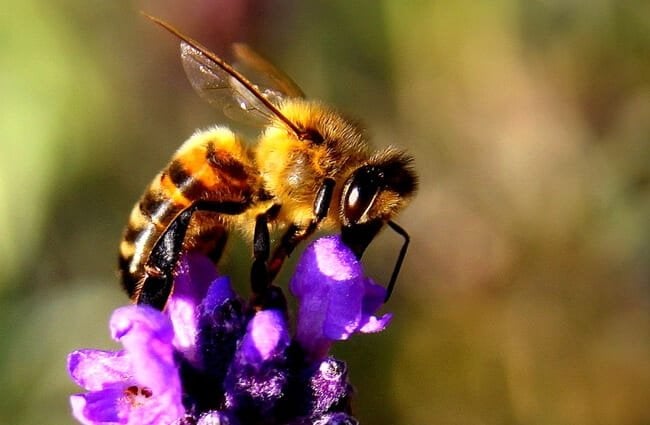
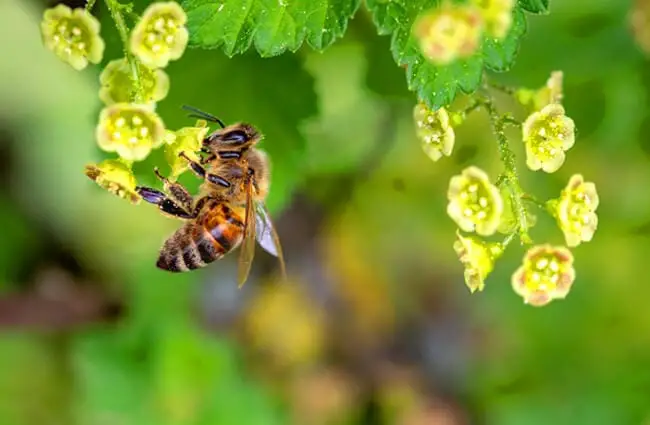
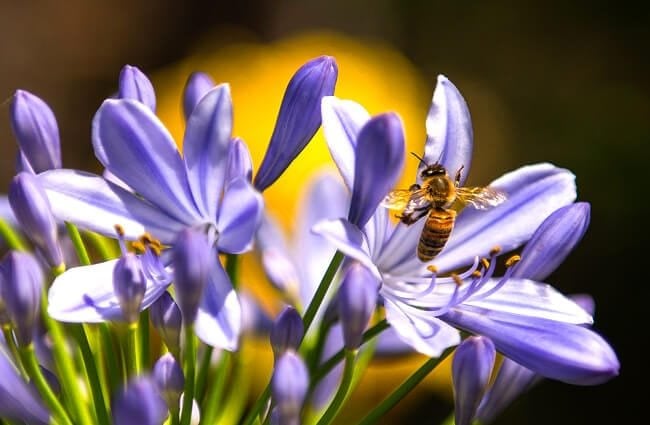
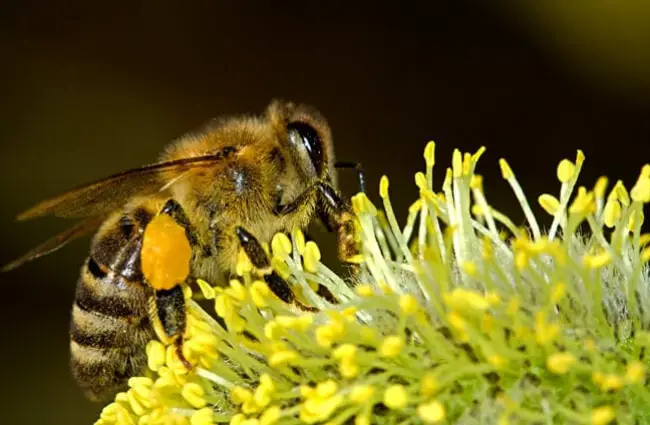
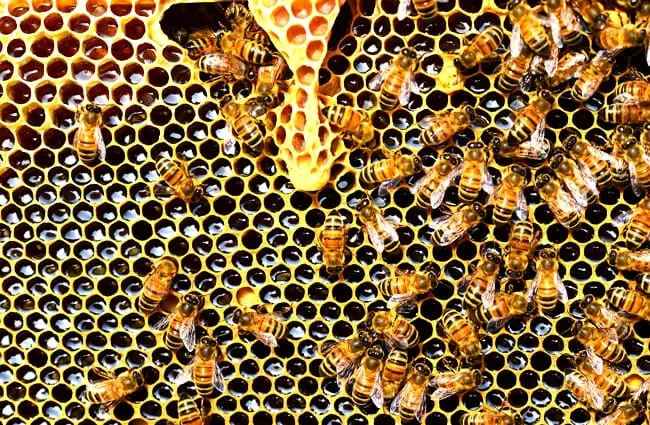
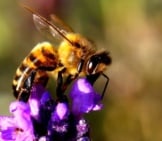
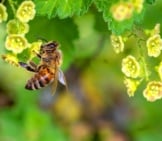
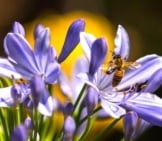
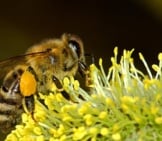


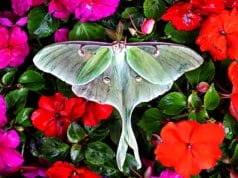
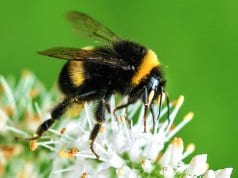










![Red Angus Closeup of a beautiful Red Angus cowPhoto by: U.S. Department of Agriculture [pubic domain]https://creativecommons.org/licenses/by/2.0/](https://animals.net/wp-content/uploads/2020/03/Red-Angus-4-100x75.jpg)

